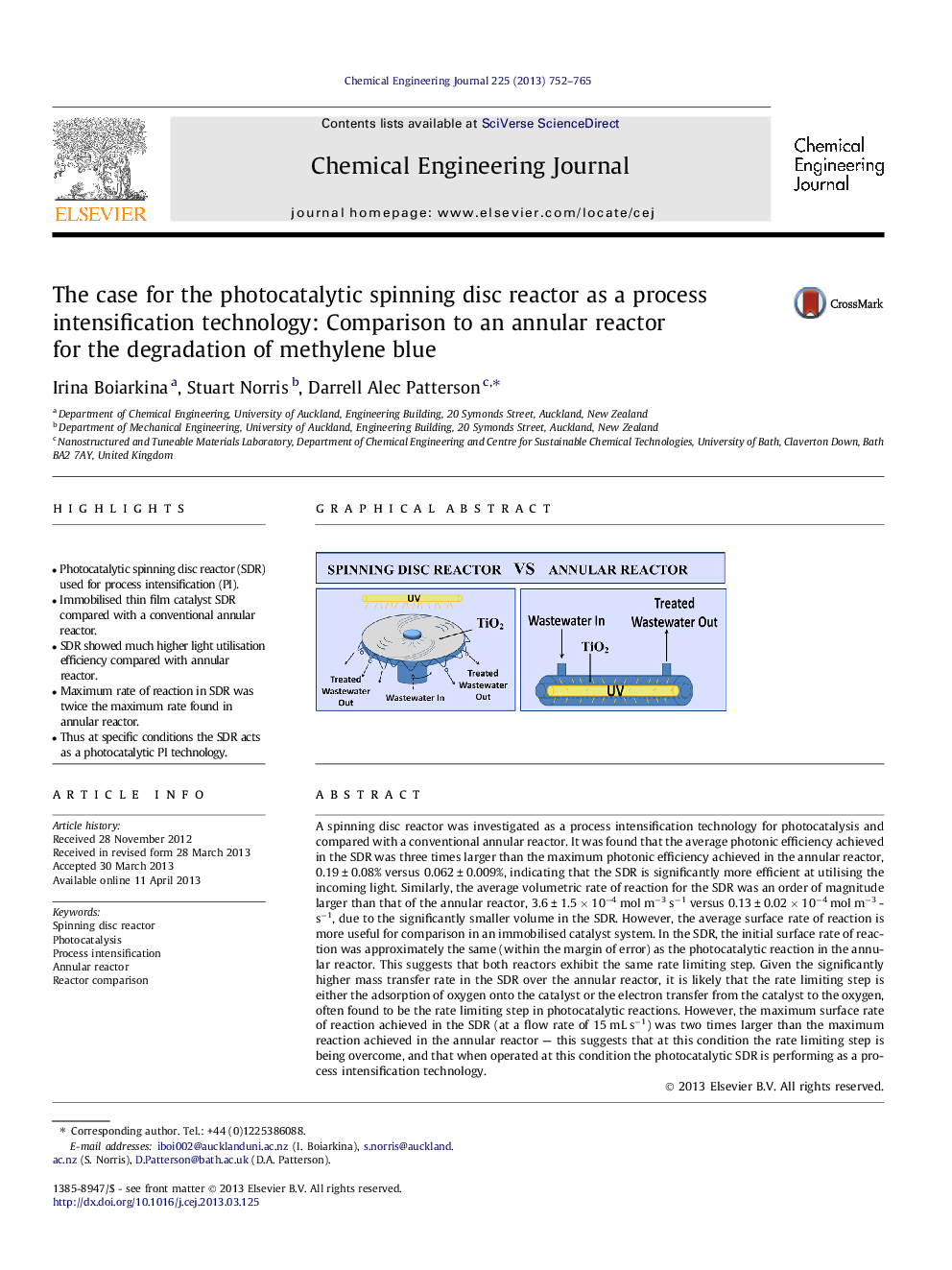| Article ID | Journal | Published Year | Pages | File Type |
|---|---|---|---|---|
| 148719 | Chemical Engineering Journal | 2013 | 14 Pages |
•Photocatalytic spinning disc reactor (SDR) used for process intensification (PI).•Immobilised thin film catalyst SDR compared with a conventional annular reactor.•SDR showed much higher light utilisation efficiency compared with annular reactor.•Maximum rate of reaction in SDR was twice the maximum rate found in annular reactor.•Thus at specific conditions the SDR acts as a photocatalytic PI technology.
A spinning disc reactor was investigated as a process intensification technology for photocatalysis and compared with a conventional annular reactor. It was found that the average photonic efficiency achieved in the SDR was three times larger than the maximum photonic efficiency achieved in the annular reactor, 0.19 ± 0.08% versus 0.062 ± 0.009%, indicating that the SDR is significantly more efficient at utilising the incoming light. Similarly, the average volumetric rate of reaction for the SDR was an order of magnitude larger than that of the annular reactor, 3.6 ± 1.5 × 10−4 mol m−3 s−1 versus 0.13 ± 0.02 × 10−4 mol m−3 s−1, due to the significantly smaller volume in the SDR. However, the average surface rate of reaction is more useful for comparison in an immobilised catalyst system. In the SDR, the initial surface rate of reaction was approximately the same (within the margin of error) as the photocatalytic reaction in the annular reactor. This suggests that both reactors exhibit the same rate limiting step. Given the significantly higher mass transfer rate in the SDR over the annular reactor, it is likely that the rate limiting step is either the adsorption of oxygen onto the catalyst or the electron transfer from the catalyst to the oxygen, often found to be the rate limiting step in photocatalytic reactions. However, the maximum surface rate of reaction achieved in the SDR (at a flow rate of 15 mL s−1) was two times larger than the maximum reaction achieved in the annular reactor — this suggests that at this condition the rate limiting step is being overcome, and that when operated at this condition the photocatalytic SDR is performing as a process intensification technology.
Graphical abstractFigure optionsDownload full-size imageDownload as PowerPoint slide
